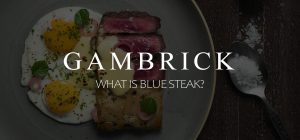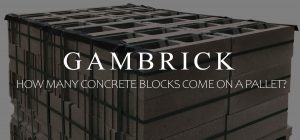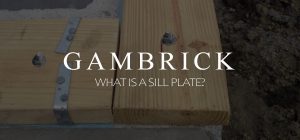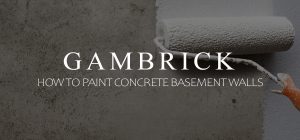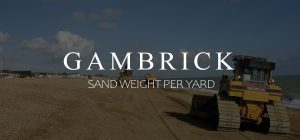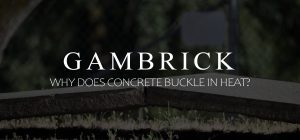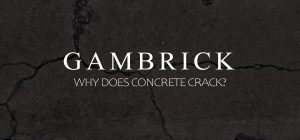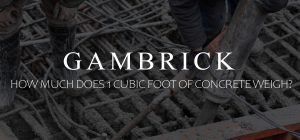
How To Make Concrete Powder
Dry concrete powder is made from 3 basic ingredients, cement, sand and aggregate stone. These 3 ingredients are mixed together in varying amounts to create dry concrete. But finished concrete is made of cement, sand, stone, and water. To make concrete, dry concrete powder is mixed with water, it then hardens and grows strong through a chemical reaction called curing. The entire process takes around 28 days to complete. Water is an essential ingredient used to make concrete along with the dry ingredients.
You’ve probably seen premixed Quikrete bags of concrete or Portland Cement at your local hardware store or Home Depot. You can make that same concrete powder and cement at home out of all natural materials. And we’ll show you how.
Natural materials like limestone, clay, and sand are crushed and ground down before being placed in a super heated kiln to refine the materials. After being heated for a long period of time, the materials are then ground down again and mixed in specific ratios to create concrete powder.
Ahead we’ll teach you how to make concrete at home, from scratch, step by step. We’ll also explain how to make each raw ingredient that goes into the dry concrete power.
What Makes Homemade Concrete Powder
Concrete is one of the most popular building materials in the world. It’s very strong, durable, and resistant to the elements. And it’s easy to form which makes it a very versatile building material. Most people order a concrete truck or buy premixed bags like Quikrete. But concrete is an all natural building material that you can make yourself if you know how.
Concrete has been around for centuries. The Greeks and Romans used it to build some of the most beautiful architecture in the world. Although they used basic materials without any reinforcement, their concrete was strong enough to support massive structures that have lasted centuries. While today’s concrete is basically the same as it was hundreds of years ago, we’ve invented reinforcements like rebar, wire mesh and fiber to make it even stronger.
The same basic concrete that was used to build the Roman Coliseum can be made by you, at home, with just a few basic ingredients.
- Cement. A mix of pulverized limestone, oysters, freshwater mussel shells or seashells that have been heated to high temperatures which removes CO2.
- Concrete. Cement, sand and aggregate stone mixed with water.
- Mortar. Cement, sand and lime mixed with water.
It may be hard to believe but that’s it. Just a few simple all natural materials prepared and mixed in the correct way is all you need to make extremely strong concrete.
Limestone Is An Important Ingredient For Making DIY Concrete
Limestone is a very important part of concrete powder. But if you can’t get your hands on it, there are some natural substitutes you can use instead. Oyster shells, freshwater mussel shells or seashells can be in place of limestone. The minerals you need are all there and the process to fire and break them down is the same.
Shells are easy to find if you live by the water. But what if you want to use limestone instead of shells, how do you know if a rock is limestone?
There are a few ways you can test your rock to see if it’s limestone.
- First, take some vinegar or an acid and pour a little on the rock. If it starts to fizzle, make bubbles and you hear a popping sound, then it’s probably limestone.
- Second, scratch the rock with a coin. If the coin leaves and imprint then you are probably holding limestone. Almost all other rocks are too hard to be scratched by a coin.
If both of these tests are passed, chances are your holding real limestone.
How To Make DIY Cement
If you want to make homemade concrete powder then you’ll first have to make cement. It’s cement that chemically reacts with water to harden and strengthen concrete. Cement is the active ingredient in the mixture. Everything else helps form and strengthen the concrete.
First, break up your limestone or shells into as small of pieces as possible. The larger the pieces the higher the heat needs to be and the longer the process will take.
Second, gather your limestone or shell pieces and fire them in a kiln. For it to work you need the kiln to get very hot for a long period of time. A few hours at least. If the heat is high enough and you kept it going long enough, the limestone should crumble very easily. Get the kiln as hot as you possibly can. Commercial kilns can reach as high as 3000 degrees Fahrenheit.
Finally, take out all the burnt pieces and smash them down into a powder. Get the powder as fine as you possibly can. Take out any large pieces that don’t crumble. These can be smashed and fired again with your next batch.
Burning the ingredients at a high heat for a long period of time releases their CO2 which turns them into a powder.
Caution. Use safety equipment. Wear a mask to avoid breathing in the powder and gloves. The burnt ingredients can be caustic.
Keep Cement Covered
It’s very important to keep the cement you just created covered and out of the air if you plan on storing it.
As CO2 in the atmosphere reacts with the cement, it reverts back to limestone. The process of burning and crumbling limestone and shells is basically to remove CO2 and break the ingredients down into a power. When CO2 in the air is absorbed by the powder is essentially turns the powder back into rock. For it to be usable you’d have to fire it again to remove the CO2.
How To Make DIY Concrete
Once your done burning all your limestone and shells down into a powder, you’re ready to make concrete.
The powdery substance you produced by burning and crumbling limestone and shells is sometimes called quicklime which is a form of cement. Mixing sand and aggregate stone with your cement produces dry concrete mix.
The ratios you use of each ingredient changes the strength and workability of the concrete. For example, more aggregate makes concrete stronger but harder to smooth. If your making concrete for a countertop or cast product, too much stone is a bad idea. But if your concrete is for a fence post footing or foundation, then more stone is better because you need stronger concrete to support structures.
The basic formula to make concrete is 1 part cement, 2 parts sand and 3 parts aggregate by volume. Finally add water as needed.
The stone should be between a 1/2 inch to an inch with rounded sides. Don’t use aggregate that’s jagged or too large because it makes the concrete hard to form.
Water Is The Final Ingredient Needed To Make Homemade Concrete
Once you’ve burning your limestone and shells down to form cement and mixed in your other ingredients, what you have is dry concrete. But it takes water to make concrete hard.
Mix the dry ingredients really well and then slowly add water. For an 80 pound bag of dry concrete you want about 3 quarts of fresh water. The finished product should look like thick oatmeal.
Be careful not to add too much or too little water. Too much and the concrete will be like soup, too little and you’ll have unmixed powder left over. In both cases the concrete will be weaker and prone to cracking.
To test this, when your concrete is fully mixed and you see no powder left over, take some in your hand. If you can form it into a ball and it holds shape then your concrete is mixed correctly. But if it’s too wet to form then you need more mix to balance things out. And if you see powder in your tray then you need a little more water.
Remember that water is a key ingredient. Too much or too little water will both weaken your concrete and make it hard to work with.
Always use fresh water. Regular tap or well water is generally fine. Never use salt water because the salt reacts with the chemicals inside concrete and weakens it.
Gather Raw Materials
The first step in making DIY concrete powder is gathering the raw materials you’ll need. We’ve already talked about limestone and shells, but what about everything else. Limestone and shells make cement but you need more than that to make concrete.
Finding gravel and sand is pretty easy. Raw sand and small stones can be found just about anywhere in nature. Especially if you live by the beach. But what if you don’t.
- Sand. Look for sand that’s similar to the ocean beaches here in New Jersey. It’s very fine but not powdery. Powder beaches, like what you’d find in Florida, isn’t the type of sand that’s used to make concrete. River sand is OK but not if the sand is too large.
- Aggregate. Almost any stone will do but what’s recommended are small round stones between 1/2 inch to an inch in size. Too small and the concrete will be weaker. Too large and it won’t be workable. Also avoid jagged edges because they make the concrete surface hard to finish.
You can buy the raw materials in bulk straight from a quarry or masonry supplier. This option is easier but more expensive. If you want to truly make concrete by yourself, all the ingredients are found in nature.
The Purpose Of Concrete Powder
Concrete powder, or cement, is the most essential component of a concrete mixture. It’s the active ingredient, or glue, that holds the whole substance together. When cement and water are mixed together, a chemical reaction occurs called curing which hardens and strengthens concrete over a 28 day period. The other ingredients in your concrete add strength and attributes like crack resistance but it’s the cement that binds everything together.
Concrete is made when dry cement powder is mixed with aggregates like gravel and sand and then water. Without these other ingredients, concrete wouldn’t be strong enough to support large structures.
The most common type of concrete powder we use today is called Portland cement.
What Is Commercial Concrete Powder Made Of?
Concrete is made up of a variety of natural and raw materials like sand, aggregate stone, cement and finally water. Some manufacturers also include calcium, silicon, aluminum, iron, and other ingredients to add more strength or crack resistance.
Other common ingredients used to make powdered concrete include limestone, shells, and chalk or marl combined with shale, clay, slate, blast furnace slag, silica sand, and iron ore. But the most common, and basic combination used for concrete powder is limestone, clay, and sand.
Commercial Concrete Powder Making
Large scale commercial companies heat their raw materials to form concrete powder inside a rotary kiln. The process is exactly the same as when you make concrete powder yourself only on a much larger scale and in huge batches.
A rotary kiln is a rotating tube designed to bake whatever is inside by withstand high temperatures. Kilns are commonly used in pottery, but the ones used to make concrete are bigger and hotter. Concrete kilns can be as big as 12 feet in diameter and longer than 400 ft. They’re lined with a special firebrick able to withstand very high temperatures.
Raw materials inside the kiln can reach temperatures as high as 3000 degrees Fahrenheit.
Because of prolonged exposure to high heat, elements inside the materials are burned off and turned into gas. What remains are small grey balls like marbles which are called clinker.
Clinker Is Ground Into Powder
After the clinker is cooled, it’s ground up and crushed it into smaller pieces. The end result is a fine powder. Once crushed, it’s combined with other raw materials like gypsum to complete the mixture.
The result is commercial concrete powder. This concrete powder is finally combined with aggregates and then water to form strong concrete. You can buy it by the truck load or in bags like Quikrete.
DIY Concrete Making Tips
Making your own concrete at home isn’t that hard to do. All you need are the right raw materials, a kiln and some fuel. Most kilns just use wood. You’ll also need some basic tools to smash the ingredients like a hammer and a hard surface to work on.
- Make sure to use the right sand. River sand is different than sand from dirt which is different from sand at an ocean beach. Sand from dirt yields better concrete than river sand but the best is beach sand.
- You can separate sand out of yard dirt by putting it in a bucket and sifting it. The sand is the biggest component of soil and will settle out first. As it settles just pour off the rest of the water to remove the silt and clay.
- I’ve found the best way to gather sand is at the beach, but it’s not always legal to take too much. make sure check your local laws.
- Make sure to have enough fuel on hand to heat your kiln for at least a few hours. If you stop before the process is complete you’ll have to fire the ingredients all over again.
- First, gather all your ingredients. There’s no sense getting started until you’ve got everything you need ready.
- Second, get your tools ready. You need a kiln and hand tools to break up and grind the ingredients.
- If you really want to go old school, use granite rocks to grind and bash the softer limestone and shells.
- You can buy a kiln or make your own out of clay and bricks.
Summary: How To Make Concrete Powder
Concrete is made from 3 basic ingredients, cement, sand and aggregate stone. These 3 ingredients are mixed together to create dry concrete. When dry concrete is mixed with water, it hardens and grows strong through a chemical reaction called curing. The entire process takes around 28 days to complete. You’ve probably seen premixed Quikrete bags of concrete or Portland Cement at your local hardware store or Home Depot. You can make that same concrete powder and cement at home out of all natural materials. And we’ll show you how.
Natural materials like limestone, clay, and sand are crushed and ground down before being placed in a super heated kiln to refine the materials. After being heated for a long period of time, the materials are then ground down again and mixed in specific ratios to create concrete powder.
Ahead we’ll teach you how to make concrete at home, from scratch, step by step. We’ll also explain how to make each raw ingredient that goes into the dry concrete power.
If you have any questions or comments e-mail us any time. We’d love to hear from you.

John Mazzuca | About | More Posts |
Custom Home Builder
John Mazzuca is a custom home designer and builder at Gambrick with over 25 years experience in the construction industry. John has designed, built and/or remodeled hundreds of homes, small buildings, and commercial projects. He writes about business, real estate, home building, and household electronics. His work has been featured in Fox Business, Better Homes & Garden, House Beautiful, and more.
